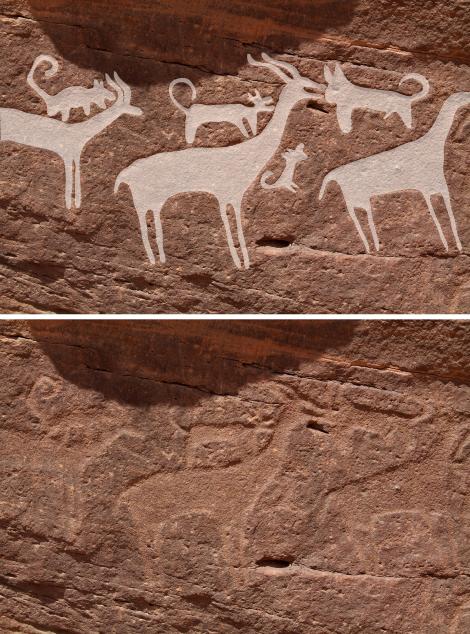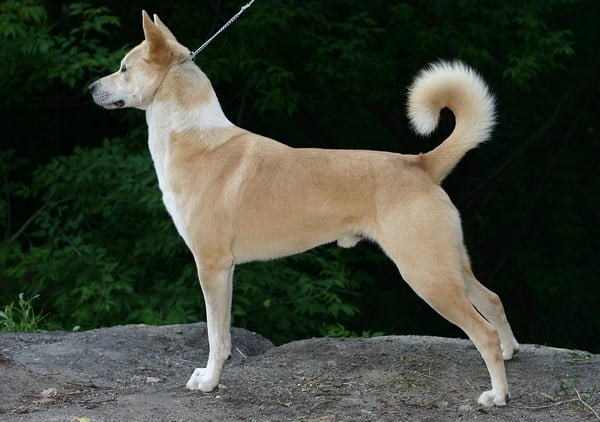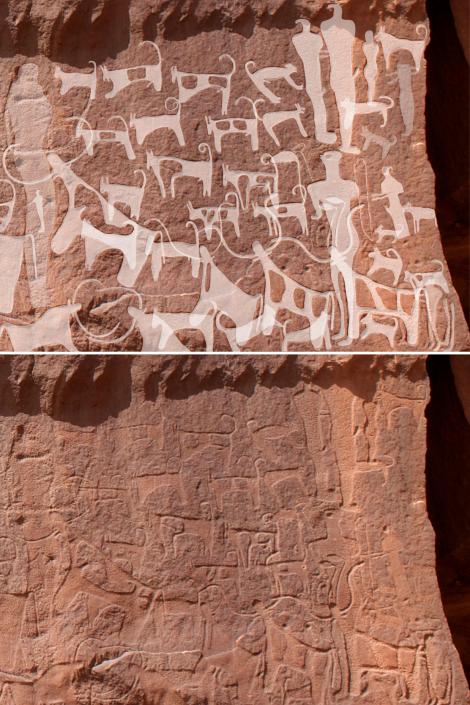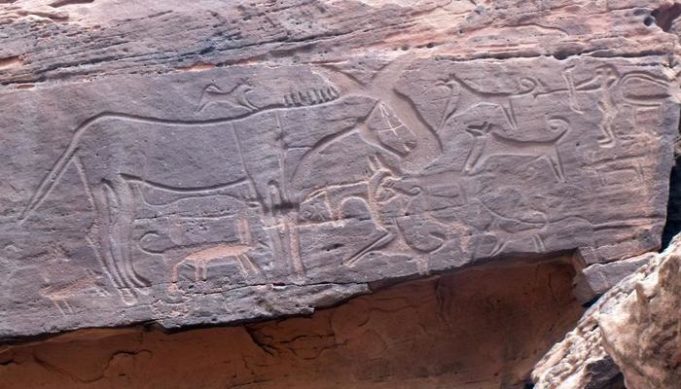The recent discovery of wall art in a Saudi Arabian cave reveals pictures of hunters with dogs on leashes, and dates back thousands of years.
Researchers believe that engraved artwork depicting a hunter being assisted by his pack of dogs may be the oldest depiction of dogs ever discovered.
The artwork was found in a cave in the northwestern region of Saudi Arabia. The research on this art is being done by archaeologist Maria Guagnin and her team at the Max Planck Institute for the Science of Human History in Germany. Her findings were published recently in the Journal of Anthropological Archaeology.
What the Pictures Show
Guagnin says that the distinction between herders and hunters was made immediately clear by this artwork, which contains 1,405 rock art panels depicting 6,618 images of animals.

The rock art, which is carved into the cliffsides of the Jubbah and Shuwaymis archaeological sites, displays images of dogs assisting humans in hunting.
The dogs appear to be medium-sized, with pointed ears, short snouts, and a curled tail. They look to resemble the Canaan dog breed, which exists today.
RELATED: 20 Most Ancient Dog Breeds
Rock art carved into the cliffsides of archaeological sites at Shuwaymis and Jubbah shows images of dogs aiding human hunters. Compared to the adjacent carvings of people, the canines are medium-sized, with short snouts, pointed ears, and a perky, curled tail. They resemble the modern-day Canaan dog breed (which is the national dog of Israel).

The most interesting thing that stands out about this artwork is the depiction of what appears to be leashes, which serve to keep the dogs tethered to their human companions. The rope-like images go from the dogs’ necks to the humans’ waists.
In one fascinating depiction, a human appears to be preparing his bow to kill a nearby animal, with the tethered dogs flanking him at the sides.
Dating the Images
According to Guagnin, the frustrating issue with engravings is that there is no reliable method available to be able to date them precisely.
But to reach an approximate age estimate, researchers were able to perform weathering analysis on the rock which surrounds the site along with the contents of what is pictured in the engravings.
A big clue researchers got was the fact that some of the art includes images of cattle and sheep; this tells us that the society was pastoral.
Pairing this with what scientists suspect was the time of origin for pastoral farming on the Arabian Peninsula, estimates of the age of this artwork put its creation between the years 9,000 B.C and 5,000 B.C.

If this is true, it would make them the world’s oldest (and therefore first) images of canine companions.
Our Ancient Furry Friends
Other archaeological studies have uncovered additional evidence of dogs being domesticated long ago. Dog bones found near human settlements date back as far as about 10,000 years old. However, evidence of dogs aiding humans in hunting is more rare.
Robert Losey is a professor at the University of Alberta, and might have one of the coolest jobs ever; he is an expert on the ancient relationships between humans and animals – especially dogs.
Losey has uncovered evidence of dogs in Siberia that dates back 10,000 years. While he isn’t sure of the role of these dogs, he points out that they likely were not a food source because they were buried deliberately (perhaps ceremoniously) with their skeletons still intact. Food sources are found in the same condition.
According to Losey, man’s ability to hunt was greatly improved when they began to team up with dogs for assistance. Looking at these images of dogs who appear to be on leashes, he stated that the emotional attachment between man and dog is very, very old.
In fact, Guagnin noted that whoever created this ancient artwork likely had a very close bond with animals. Other researchers agree with her.

The evidence of this lies in the level of effort and attention to detail in the dogs. Particular markings are depicted, and indicate a strong degree of attention paid by the artist or artists to the animals.
Guagnin and her team plan to return to Jubbah, and suspect that there are more sites dating back as far as 10,000 B.C. There, they will seek out additional evidence of dogs living with (and loving) their human companions.
READ NEXT: 30 Extinct Dog Breeds That You Never Knew Existed













